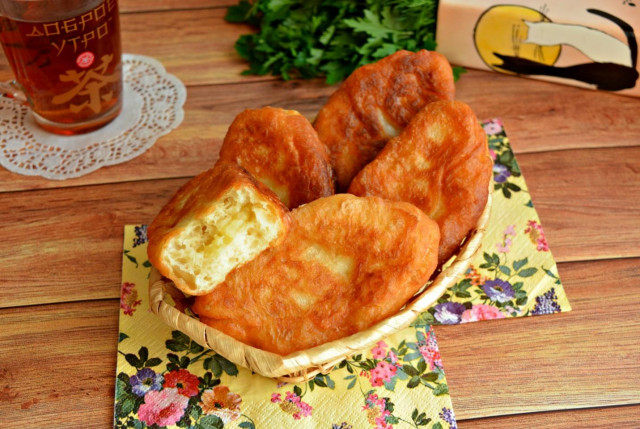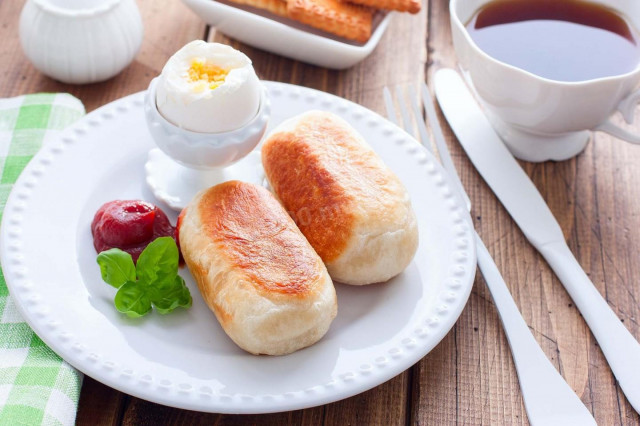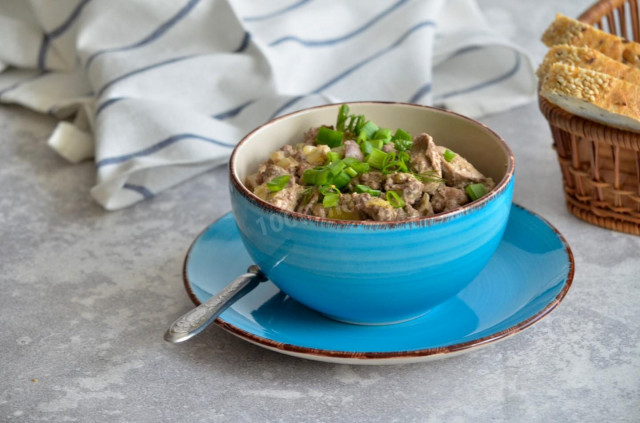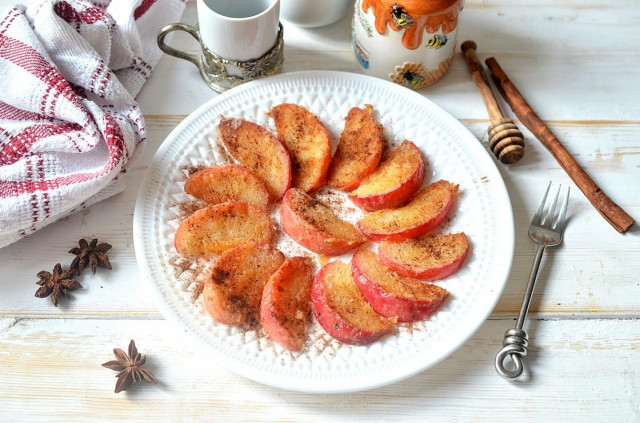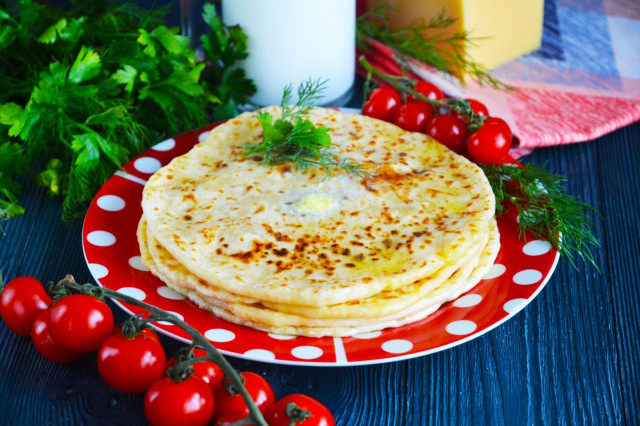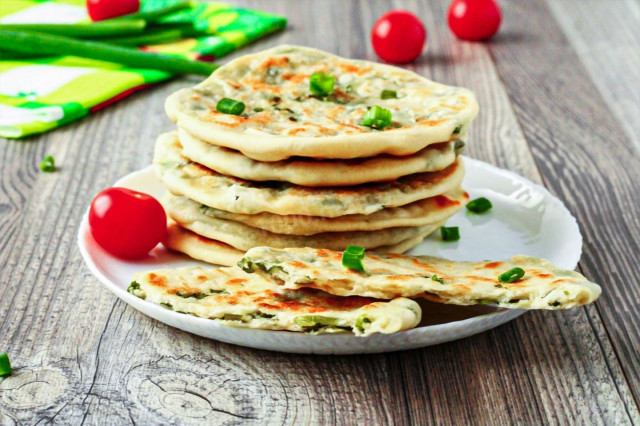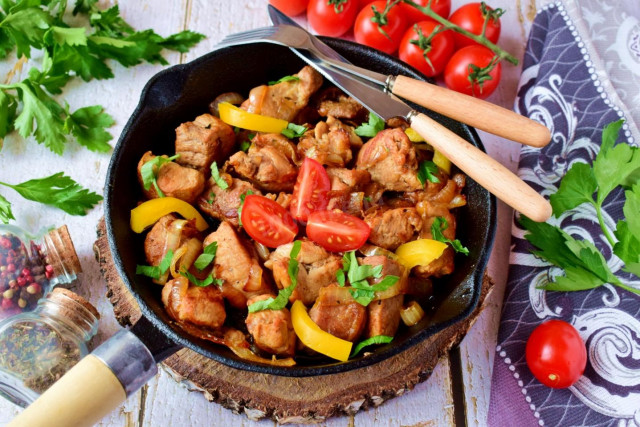Composition / ingredients
Step-by-step cooking
Step 1:
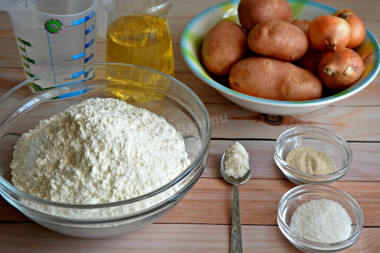
How to make yeast pies? We will need the simplest and most inexpensive products, prepare them in advance. Sift the flour through a fine sieve to saturate with oxygen. Wash the potatoes well and dry them. Peel the onion from the husk, wash and dry.
Step 2:
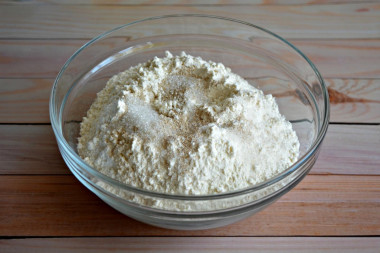
Start by kneading the dough. We will not put any sourdough, but immediately knead the dough from all the ingredients. First, mix all the "dry" ingredients: part of the flour (about 2 cups), dry yeast, salt and sugar.
Step 3:
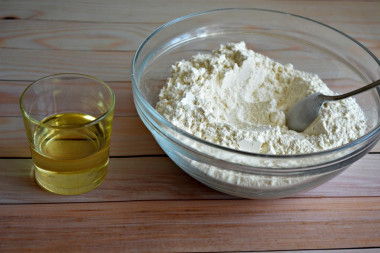
Make a recess in the flour. Pour half a cup of vegetable oil into the dry products.
Step 4:
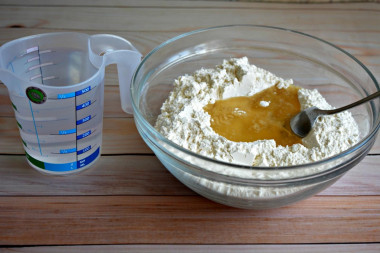
Add warm (about 40 degrees) water to the flour. Attention, the water should not be too hot, so as not to kill the yeast. Thanks to the warm water, the dough rises very quickly.
Step 5:

Pour the remaining flour into the pieces and start kneading the elastic dough. Flour may need a little more or less. The dough should not stick to your hands, but also not be too steep. Cover the dough with a clean towel and leave to come up for literally 20-30 minutes while the potatoes are cooked for the filling. It is advisable to put the dough next to the stove so that the potato pairs help the dough rise.
Step 6:
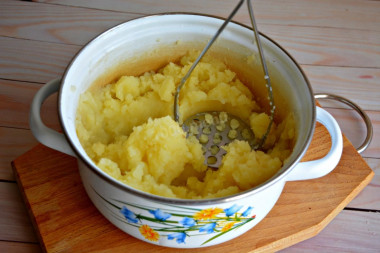
While the dough is rising, do the filling. Peel the potatoes, wash them and boil them in salted water. Then drain the water, and puree the potatoes. It is better to do this with the help of a pusher.
Step 7:
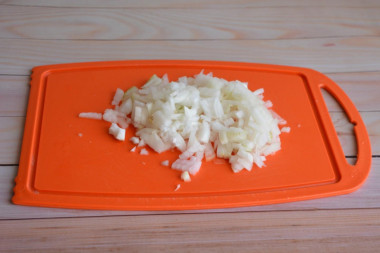
Finely chop the peeled onion. Then fry the onion in vegetable oil until golden brown.
Step 8:
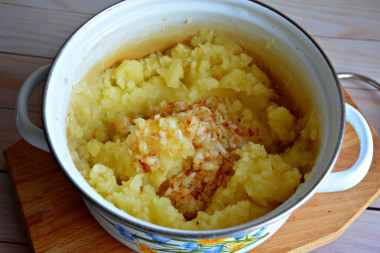
Season the mashed potatoes with fried onions, mix well. The filling for the pies is ready.
Step 9:
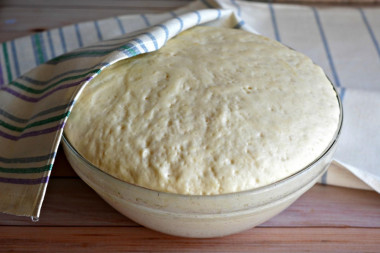
The dough came up well during this time. We didn't touch him. And now we will remember him and immediately begin to make pies. Knead the dough with your hands, knead it for about 3-5 minutes.
Step 10:
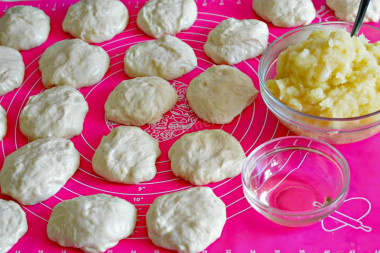
The dough is very pliable and elastic, so we will not use a rolling pin, but we will do everything with our hands greased with vegetable oil. Put a plate of butter next to you, dip your hands and start tearing off pieces of the same size from the dough, thus making blanks for future pies.
Step 11:
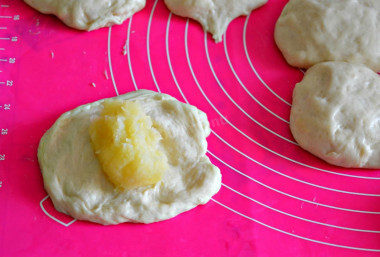
Put a frying pan with oil on the stove to heat up. And start making the first pies. With your hand, give a piece of dough the shape of a flat cake, not necessarily beautiful and smooth, the pies will still rise, and all the irregularities will disappear. Spread the filling, it should be half the size of the dough. Although it is optional, you can put more.
Step 12:
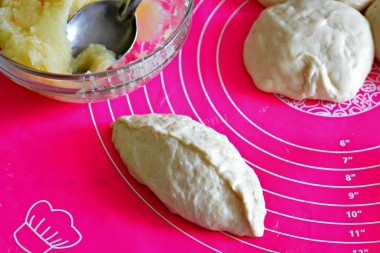
Connect the edges of the dough and fasten them in the form of a pie. Immediately send it to the frying pan to fry, putting it in boiling oil seam down. In the same way, mold the next pie. You need to do everything very quickly. If you want, you can make all the pies in advance, and only then fry them.
Step 13:
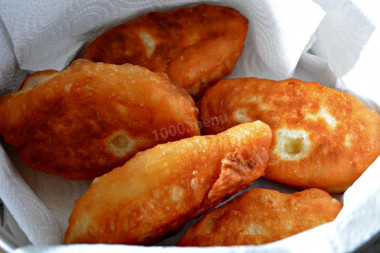
The pies noticeably increased in size during frying. Transfer the finished pies to a paper towel so that the excess oil is absorbed.
Step 14:
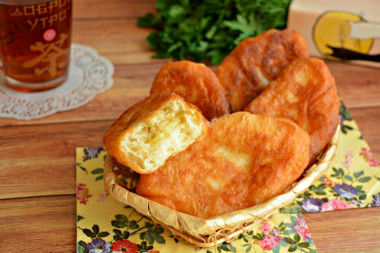
Serve fried pies with potatoes on yeast with lightly salted cucumbers or for tea, as anyone likes. Enjoy your meal!
Potato filling is the most popular, because everyone loves potatoes, both adults and children. And most importantly, the taste of pies is like those that are usually sold at train stations, and earlier in Soviet times they were sold in pirozhkovs.
Yes, harmful, yes, fatty, but insanely delicious pies! A very budget recipe. The dough is practically made from nothing without eggs, milk or kefir, it rises in a matter of minutes and always turns out to be airy like fluff.
Be prepared for the fact that you may need more or less flour than indicated in the recipe. Focus not on the amount of flour, but on the desired consistency of the dough. To avoid mistakes, read about flour and its properties!
Any oils are useful only until a certain temperature is reached - the point of smoking, at which the oil begins to burn and toxic substances, including carcinogens, are formed in it. How to determine the roasting temperature and choose the best oil for frying, and which is better not to use at all, read here .
Important! An incorrectly selected frying pan can ruin even the best recipe. All the details on how to choose the perfect frying pan for different dishes read here .
Important! Using dry yeast, it should be borne in mind that they occur in two forms: active and instant (read the instructions carefully before use!).
Active dry yeast looks like beads or small balls. Before applying them, they must be brought out of the "sleep mode". To do this, the active yeast is diluted in warm sweet water, milk or whey. The resulting bubbles, foam or "cap" indicate that the yeast is ready for further use. Active dry yeast must be brought to complete dissolution in the liquid, otherwise, due to the remaining grains, the dough may not rise and the baking will be spoiled (yeast grains that have not dissolved in the liquid and got into the dough will not disperse on their own, which means they will not work).
Instant dry yeast is easier to use. They do not need to be activated before use. Such yeast, along with other ingredients, is simply added to the dough. As a result, the baking time is reduced.
It should also be remembered that both types of dry yeast may differ in their activity from different manufacturers.
Caloric content of the products possible in the composition of the dish
- Onion - 41 kcal/100g
- Ripe potatoes - 80 kcal/100g
- Baked potatoes - 70 kcal/100g
- Mashed potatoes - 380 kcal/100g
- Boiled potatoes - 82 kcal/100g
- Potatoes in uniform - 74 kcal/100g
- Fried potatoes - 192 kcal/100g
- Whole durum wheat flour fortified - 333 kcal/100g
- Whole durum wheat flour universal - 364 kcal/100g
- Flour krupchatka - 348 kcal/100g
- Flour - 325 kcal/100g
- Granulated sugar - 398 kcal/100g
- Sugar - 398 kcal/100g
- Vegetable oil - 873 kcal/100g
- Salt - 0 kcal/100g
- Water - 0 kcal/100g
- Dry yeast - 410 kcal/100g

